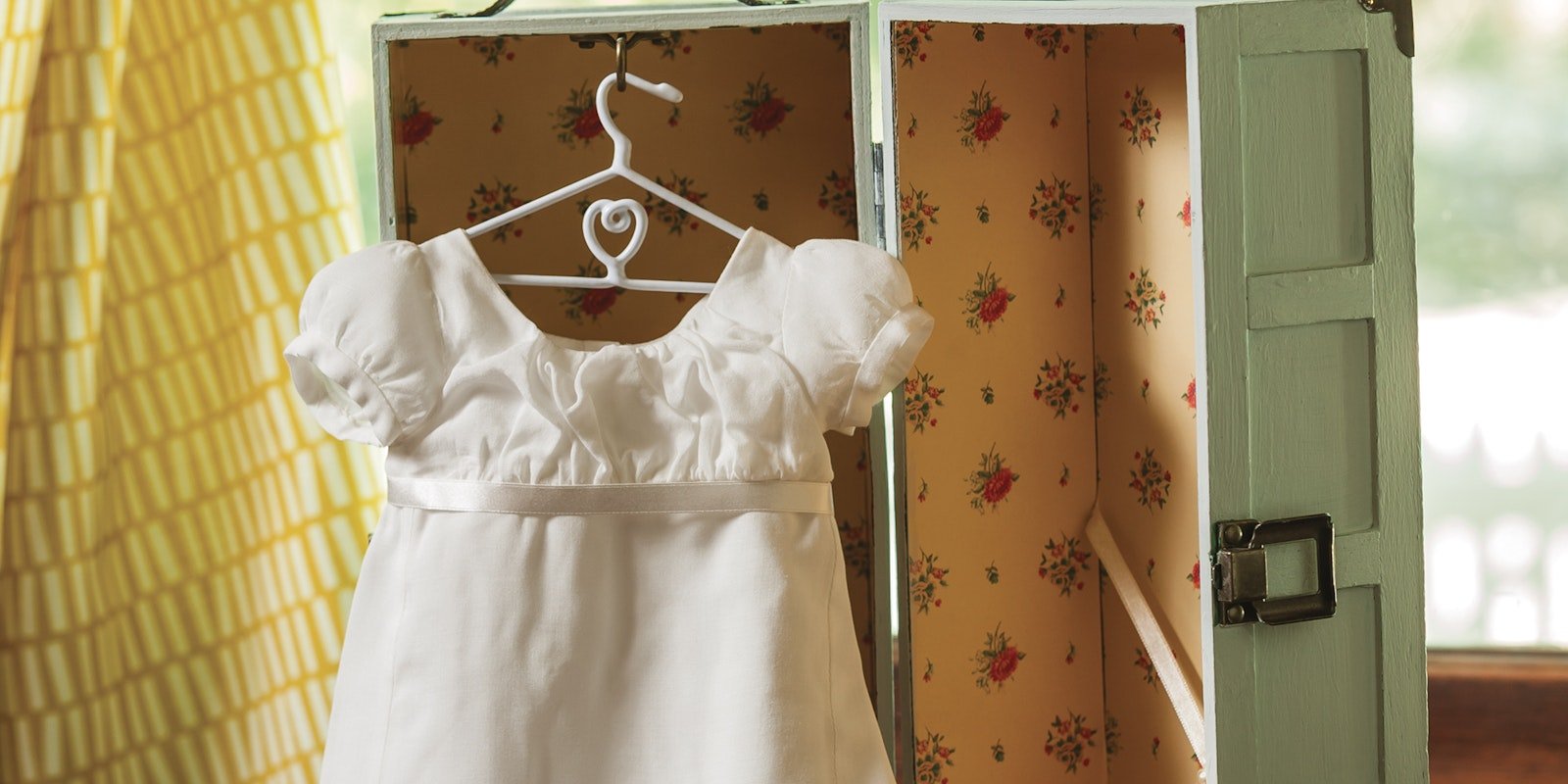Subscriber Exclusive
Inspired by Jane Austen: A Regency-Era Doll Dress to Sew and Embroider
Craft an heirloom for a beloved doll.
Craft an heirloom for a beloved doll. <a href="https://pieceworkmagazine.com/inspired-by-jane-austen-a-regency-era-doll-dress-to-sew-and-embroider/">Continue reading.</a>
https://pieceworkmagazine.com/cdn-cgi/image/format=auto/https://www.datocms-assets.com/75076/1744658042-01-pw916-0004-doll-dress-header.jpg?auto=format&w=900
Mary Polityka Bush designed this lovely doll dress after reading a Jane Austen novel. Photos by Joe Coca
“You are a formidable lady, are you not, Aunt Jane?” she asked wistfully. “When I was a child I used to think you were like a good faerie—always dropping out of the sky with your delightful stories and dollsclothes you embroidered so neatly. . . .”
—Fanny Knight to Jane Austen in Stephanie Barron’s Jane and the Canterbury Tale.
PieceWork magazine subscribers can log in and access this bonus subscriber-exclusive PDF instantly.
Jane Austen, who never married, had no children of her own. As a doting aunt, Jane is likely to have lavished attention on her numerous nieces and nephews, in particular her older brother Edward’s firstborn daughter, Fanny, who was her favorite niece. It is easy to imagine, as author Stephanie Barron does, Jane sewing and embroidering a diminutive dress for Fanny’s doll, perhaps one similar to the dress here. The dress’s simple style recalls the signature silhouette of the Regency Era (1795–1837), with its high waist, scooped neck, softly gathered bodice and sleeves, and skirt that falls straight in front and is slightly fuller in back to make walking easier.
SUBSCRIBER EXCLUSIVE
Unlock the Full Article with a PieceWork Subscription
Get instant access to this article and the entire PieceWork library of projects, inspiration, and expert instruction. With your subscription, you’ll receive:
Unlock timeless techniques and heirloom-quality patterns
Learn from expert tutorials that deepen your historical craft knowledge
Enjoy unlimited access to exclusive content—updated regularly
Includes full access to PieceWork magazines + new issues.
PieceWork celebrates the rich history of needlework and makers from around the globe.
Plans start at just $4.99/month. Cancel anytime.
“You are a formidable lady, are you not, Aunt Jane?” she asked wistfully. “When I was a child I used to think you were like a good faerie—always dropping out of the sky with your delightful stories and dollsclothes you embroidered so neatly. . . .”
—Fanny Knight to Jane Austen in Stephanie Barron’s Jane and the Canterbury Tale.
PieceWork magazine subscribers can log in and access this bonus subscriber-exclusive PDF instantly.
Jane Austen, who never married, had no children of her own. As a doting aunt, Jane is likely to have lavished attention on her numerous nieces and nephews, in particular her older brother Edward’s firstborn daughter, Fanny, who was her favorite niece. It is easy to imagine, as author Stephanie Barron does, Jane sewing and embroidering a diminutive dress for Fanny’s doll, perhaps one similar to the dress here. The dress’s simple style recalls the signature silhouette of the Regency Era (1795–1837), with its high waist, scooped neck, softly gathered bodice and sleeves, and skirt that falls straight in front and is slightly fuller in back to make walking easier.
[PAYWALL]
 Any doll owner will adore having this Regency-era dress for a favorite doll. Mary Polityka Bush added a garland of ruched satin ribbon and embroidered chain-stitch stripes on the skirt of the dress.
Any doll owner will adore having this Regency-era dress for a favorite doll. Mary Polityka Bush added a garland of ruched satin ribbon and embroidered chain-stitch stripes on the skirt of the dress.
The dress was sewn from a pattern designed by Shari Fuller, who specializes in creating doll-clothes patterns based on history and literature. Like her contemporaries, Jane would probably have added trims to a dress in her own wardrobe for a special occasion or to refresh an out-of-date style. In this spirit, I added a garland of ruched satin ribbon to frame the areas of embroidered chain-stitch stripes on the skirt of the dress. Although assembling this dress was conveniently expedited by a modern sewing machine, it could be sewn by hand to replicate a true Jane Austen experience.
“A Regency-Era Doll Dress to Sew and Embroider” PDF Download
Download PDF
Mary Politkya Bush of Piedmont, California, contends there are not enough hours in any given day for all the needlework, knitting, paper crafts, reading, writing, and designing (not to mention traveling and cooking) on her to-do list. She does the best she can in the time she has, however, and thanks her husband, Tom, for his understanding when dinner is late.
Orignally published July 31, 2018; updated April 16, 2025.


 Any doll owner will adore having this Regency-era dress for a favorite doll. Mary Polityka Bush added a garland of ruched satin ribbon and embroidered chain-stitch stripes on the skirt of the dress.
Any doll owner will adore having this Regency-era dress for a favorite doll. Mary Polityka Bush added a garland of ruched satin ribbon and embroidered chain-stitch stripes on the skirt of the dress.